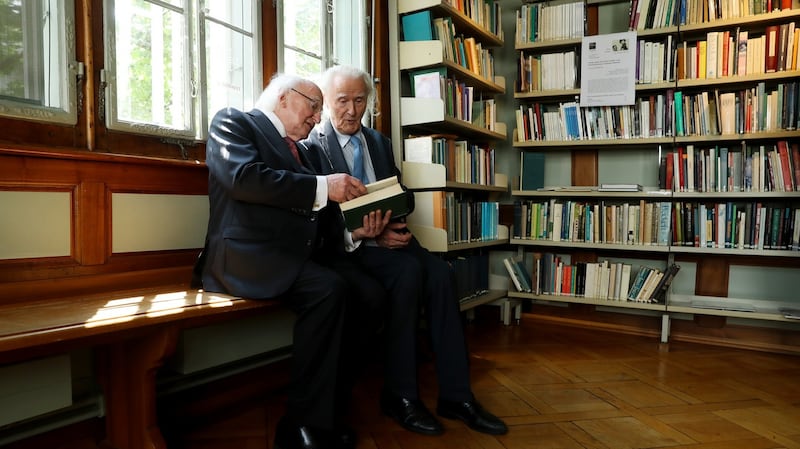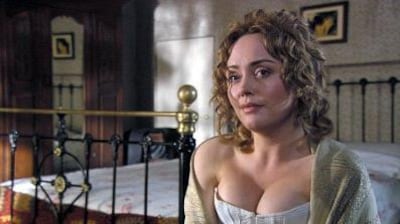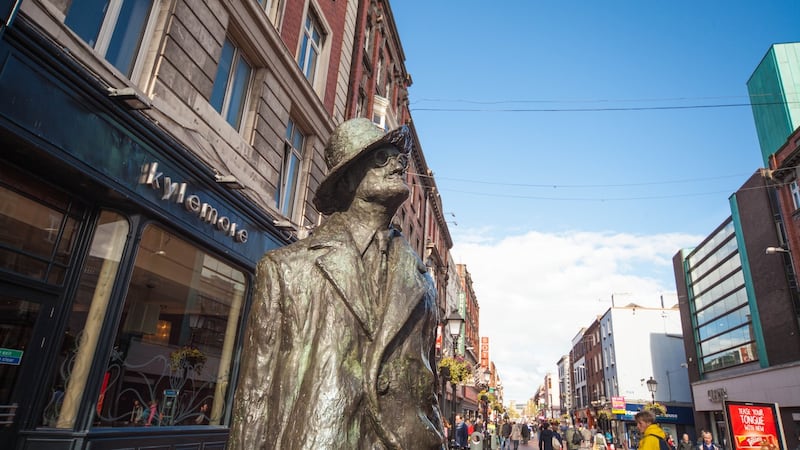The centenary of James Joyce’s birth in 1982 marked the beginning of the Irish public celebration of his work. The centenary of Ulysses comes at a moment when the novel is so revered that the name of one of its main characters echoes in the acronym of the new Museum of Literature, Ireland, MoLI. To celebrate the 100-year anniversary of this notoriously difficult book, I’ve designed a reader-friendly edition with Cambridge University Press. This volume includes 18 introductory essays by leading Joyce scholars, set between the 18 episodes of the novel, along with specially commissioned maps, archival photographs, same-page annotations and other materials to help readers make their way through Joyce’s magnum opus. The Cambridge Centenary Ulysses will be launched today at MoLI.
[ Bloomsday 2022: What events are on in Dublin on Thursday?Opens in new window ]
Collectively, the 18 contributors to Centenary Ulysses offer a sense of the history and diversity of approaches to Joyce’s writings. Each of their essays explains the episode’s events and its parallels to Homer’s Odyssey, its situation in the topography of Dublin and its most significant historical and literary referents. They also offer interpretations, outlining critical conflicts, pointing to important enigmas and indicating possibilities for further exploration.
Twelve of these 18 contributors are in Dublin this week, gathering with hundreds of other Joyceans to deliver plenaries, read papers and participate in roundtable discussions at the 28th International James Joyce Symposium. Fritz Senn, author of the essay on the penultimate episode, which Joyce called “in reality the end” of the novel, is participating remotely from Switzerland, where he has directed the Zurich James Joyce Foundation since 1985. Born just six years after Ulysses was published, he has seen many scholarly trends come and go and, at the symposium tomorrow, he will speak at a roundtable on “Generations of Critical Responses to Ulysses”.

When Senn began to publish in the 1960s and 1970s, scholars were moving away from the early focus on symbols and on what TS Eliot called Joyce’s “mythical method” towards a focus on his use of language. Fluent in multiple languages and a trained editor, Senn focuses on telling textual details. In his essay on “Ithaca”, he observes: “The episode begins, ‘What parallel courses did Bloom and Stephen follow returning?” (619), but whether the term can be applied to two people walking side by side, both tired, one of them drunk, may be questioned. If, as Euclid defines them, parallels meet only in infinity, that is, never, is that a comment on the significance of the two main characters?”
READ MORE
The interpretive focus on language led to the heady period of deconstruction in the 1980s and 1990s. At a landmark talk on Joyce at the Centre Georges Pompidou in 1982, Jacques Derrida asked: “How many languages can be lodged in two words by Joyce, lodged or inscribed, kept or burned, celebrated or violated?” Derrida then proceeded to take apart and put back together the phrase “He war” from Finnegans Wake. Daunting to the amateur reader, the poststructuralist approach infused Joyce studies with greater interpretive creativity and philosophical richness, as well as a deeper investment in the ambiguities of his writing.
[ Ulysses at 100: When Joyce’s novel languished in publishing limboOpens in new window ]
There was a backlash, however, to such purely theoretical approaches. In the mid-1960s, Irish scholars such as Emer Nolan, Enda Duffy and David Lloyd, together with international critics such as Vincent Cheng, began to examine how Joyce’s texts refract Irish history and politics. In his essay on “Cyclops”, the episode in which Bloom has a run-in with a belligerent nationalist known as “the citizen”, Cheng discusses the controversies and heated exchanges around republicanism, ethnicity and hybridity that accompanied this scholarly shift.
The focus on nationalism and postcolonialism has expanded in recent years to a concern with issues of displacement and migration. If Joyce was first seen by literary critics as a cosmopolitan exile, his characters’ emigrant and immigrant experiences are now newly salient. Leopold Bloom’s father, Rudolf Virag, changed his name to Rudolph Bloom to obscure his foreign origins after a long migration from Szombathely, Hungary, through the cities of Budapest, Vienna, Milan, Florence and London to Dublin and, finally, Ennis, where he died by his own hand. Even the reverberatingly Irish Molly-O was born in the British territory of Gibraltar, the only child of a mysterious and possibly Jewish Lunita Laredo.
Feminist revolution
Molly was at the centre of a feminist revolution in Joyce scholarship in the 1980s. Several key feminists will speak at the roundtable on “Generations of Critical Responses to Ulysses”. Vicki Mahaffey tackles the “Nausicaa” episode for the Centenary Ulysses, exploring how disability and commodification affect Gerty MacDowell’s search for a husband and Bloom’s desire for sexual release. Writing on “Calpyso”, Margot Norris argues that its Greek meaning, “concealer”, describes not only Molly’s actions, as she hides under her pillow a letter from her soon-to-be lover, Hugh “Blazes” Boylan, but Ulysses itself as it delivers its information piecemeal, arousing intrigue and provoking the reader to become a decoder of clues.

Joyce’s own piecemeal accumulation of words and phrases in manuscripts, galleys and proofs has become a subject in which Joyceans excel. “Foist Editions” is the name, taken from Finnegans Wake, of one of several panels on textual history this week. The genetic scholar Ronan Crowley writes the essay on “Circe” for the Centenary Ulysses but his knowledge of the history of the manuscripts doesn’t stop him from enjoying the strangeness of the most allusive of the novel’s episodes, in which elements from the preceding scenes of the novel reappear in new, hallucinatory form. His essay on Joyce’s version of Monto begins: “Why does Virag’s head go quack?”
At the heart of the Centenary Ulysses is a facsimile of the edition that Sylvia Beach received from the Darantiere printers at 7am on February 2nd, 1922, in the Gare de Lyon. Beach brought a copy straight to Joyce, who the day before had described himself as “in a state of prostrate excitement”. Together they had designed a beautiful book, covered in “Greek” blue, printed in a classical font John Ryder identified as Ancien Romain from the Elzévir family, and generously spaced and framed. It can’t be overstated how important a spacious layout is to a reader’s success in moving through Ulysses.
In reproducing #876 of this famously buggy first edition (a copy held at UC Berkeley’s Bancroft Library), the Centenary Ulysses steps aside from efforts to produce a definitive edition and offers instead a sense of the history of its corrections. Its large format allows space in the margins for Joyce’s own errata. “For perpetration read perpetuation” he notes helpfully on page 391 of “Oxen of the Sun”. “For razor blade read razorblade,” he advises more fastidiously, as Buck Mulligan shaves atop the Martello tower in the first episode. “For Jesuit read jesuit” he bids, perhaps in a gesture of defiance, on the very first page.
War on error
Included in the explanatory notes at the bottom of each page are references to Hans Walter Gabler’s 1986 Vintage Ulysses, which has become the standard edition for scholars. While the 1932 Odyssey Press Ulysses, edited by Joyce’s friend Stuart Gilbert, is taken by some to be the most accurate edition, Gabler took the radically alternative approach of constructing a new, virtual manuscript out of Joyce’s pre-publication materials. Many of the resultant differences are of the “razor blade/razorblade” type. Some are more striking. Gabler’s most hotly debated inclusion is the “Word known to all men”: “Love, yes,” Stephen affirms privately. Other moments are suggestive in contrast: in the 1922 edition, the blackface performer Eugene Stratton “grinned” from his poster at Father Conmee, sitting in a paused tram at Annesley Bridge; in Gabler’s edition, Stratton “grimaced”. The Centenary Ulysses includes an essay I’ve cowritten with Ronan Crowley on the errata and textual history of Ulysses.

The debates around editions are part of our ongoing responses to the open-endedness of Joyce’s writing. Yesterday, the symposium featured a roundtable called “What We Don’t Know about Ulysses”, with Sam Slote, organiser of the symposium with Luca Crispi and Anne Fogarty (and author of the essay on “Proteus”) and the members of its academic committee, Valérie Bénéjam and Tim Conley (author of the essay on “Eumaeus”). Tomorrow, a panel on enigmas addresses perennial mysteries such as the Man in the Macintosh. Other discussions this week extend to questions of how we read Joyce’s texts, the role of mistakes and correction, of anecdote and rapture.
[ The Cambridge Centenary Ulysses and The Book About Everything: Joycean treatsOpens in new window ]
New ways of reading include new modes of adapting Joyce’s writing. Scholars at the symposium are examining graphic novels, Twitter novels, popular reprints, erasure poetry, collage, “illnesstrations”, theatre, cinema, audio recordings, computer games, the multiverse and “Extended Reality”. While I worked on the Centenary Ulysses, I and some former students began a podcast called U22, in which we talk to the contributors to the volume and with readers of Ulysses from around the world. Through this podcast and its social media outreach, we’ve connected to an online community of scholars, expert enthusiasts and neophytes. I’ve also been working with Maria Doyle Kennedy and Adam Harvey on a project combining an audio reading of “Penelope” and typography in motion; this project will also be launched today, on the UC Berkeley Irish Studies website. All of these adaptations aim to expand the genres and technologies of the reception of Joyce’s works, an aim that is perhaps appropriate for a writer who exploded the novel in order to represent the modern world.
The Cambridge Centenary Ulysses, edited by Catherine Flynn (of University of California, Berkeley), is out today












